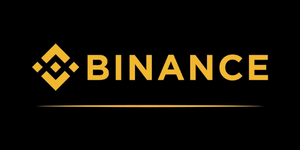Check out our comprehensive cryptocurrency glossary to help you to understand the basics of Bitcoin, blockchain & cryptocurrencies.
Unlike other cryptocurrencies, Stablecoins are meant to provide financial stability in the face of price fluctuations in the volatile cryptocurrency market. There are different kinds of stablecoins, such as FIAT-pegged stablecoins (e.g. pegged to the U.S. dollar or the euro), commodity-backed stablecoins (e.g. gold), crypto-backed stablecoins and stablecoins which rely on an algorithmic mechanism to…
A Centralized Exchange (CEX) is a cryptocurrency exchange that is owned and operated by a third-party to enable the real-time exchange of cryptocurrencies and tokens. Centralized exchanges require users to sign up and verify their identity through a Know Your Customer (KYC) process. On CEXs, users have no control over the cryptocurrencies they exchange, as…
The term Traditional Finance or TradFi describes our mainstream financial system and institutions contained therein. Institutions include, for example, banks, hedge funds, or brokerage firms. TradFi is characterized by a high degree of centralization, control, and the exclusion of retail investors from many financial services. See also: Bitcoin FAQ, Blockchain, Cryptocurrency.
The financial term Crab Market describes a sustained period in which asset prices fluctuate but ultimately return to some baseline value. The term Crab Market was named after the movement pattern of a crab. The crab moves from side to side, but never forwards or backwards. See also: Bull Market, Bear Market.
The term ASIC is an acronym for application-specific integrated circuit, which is a device or custom chip designed for the sole purpose of mining Bitcoin or other cryptocurrencies. See also: Mining, Hash Rate.
In the context of finance and cryptocurrencies the term 7d stands for market data for the past 7 days. See also: 1h, 24h, 30d.
In the context of finance and cryptocurrencies the term 30d stands for market data for the past 30 days. See also: 1h, 24h, 7d.
In the context of finance and cryptocurrencies the term 24h stands for market data for the past 24 hours. See also: 1h, 7d, 30d.
In the context of finance and cryptocurrencies the term 1h stands for market data for the past 1 hour. See also: 24h, 7d, 30d.
The cryptocurrency slang term Apeing describes the act of buying a new coin or token without first doing proper research. See also: Lambo, Moon.









